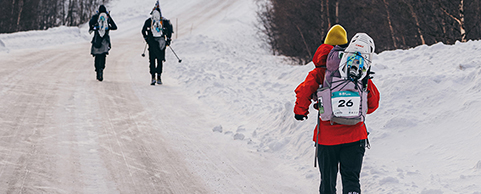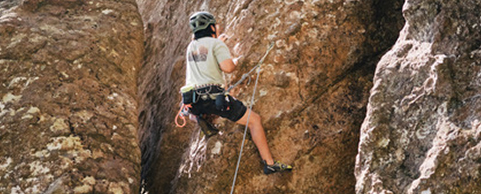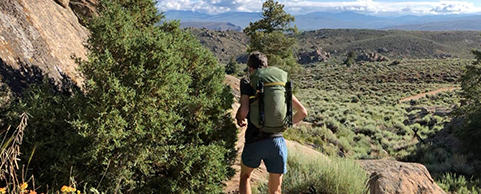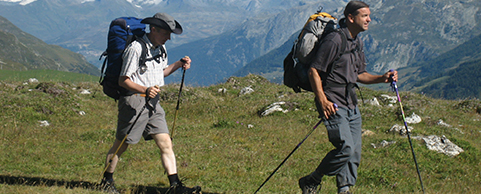Climbing: Training in Lockdown
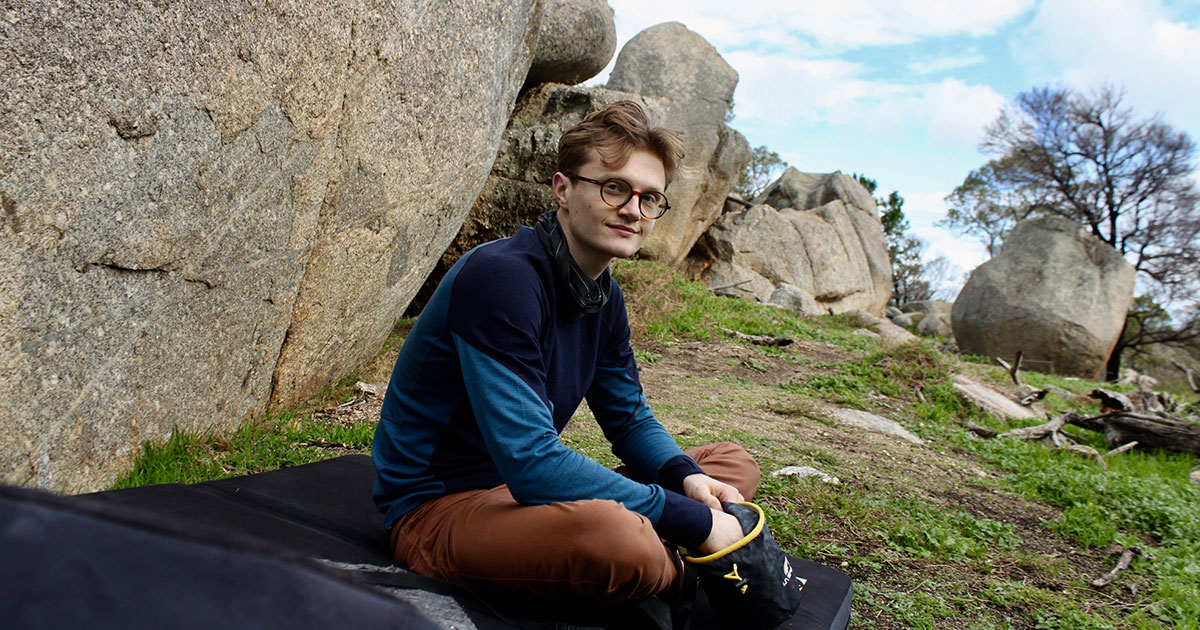
This year has been challenging for me in many ways, like it has been for most of us. In particular my climbing has been forced onto the backburner amidst an unprecedented pandemic. So what can we do to keep the psych and harness what little motivation we might have to make the most of the situation we find ourselves in?
Expectations and goal-setting
No doubt, like me, you want to improve at climbing. This prolonged period of isolation has been a significant roadblock in my personal climbing goals. Projects have had to be put on hold, sport-specific strengths have gone down, and this can be crushing when we return to the gym or crag.
It’s important to recognise that almost everyone has been put into the same boat. Yes; some people are lucky enough to have a home wall, and can train through all of this, but most of us aren’t as fortunate.
Even with my consistent training throughout the first lockdown here in Victoria, I knew I wasn’t going to be at my best. My first day back climbing was actually outdoors rather than the local gym. On this day I climbed clumsily, fell off things that I knew should have been able to do and generally just flailed around. Thing is, I was (mostly) okay with this. I think it’s important to go back to climbing with little to no expectations. It’s impossible to think that you’ll be in your prime without having climbed for months. Remember why you’re there to begin with, and you’ll quickly be up to par within a few weeks, I promise.
Giving yourself some realistic goals to work toward once you get back to climbing can also help avoid being disheartened by what you’ve lost thanks to the pandemic. This could be anywhere between “I want to do a climb of X grade” or “I’d like to do all the climbs of Y difficulty” at the gym or outdoors. I also prefer to give myself some intermediate goals within that, to help give me some drive toward other goals, whilst still feeling like I’m accomplishing things.
Motivation and dedication
In my opinion there’s a key distinction between doing something because you're motivated, or because you’re dedicated. During this pandemic a lot of people’s motivation to maintain their climbing-specific strengths has waned dramatically, and that’s okay. We live in difficult times and for many it might be best to focus on what makes you happy now, and return to climbing when we reach a new normal. You may want to find a new hobby, connect with friends and family, work on other projects in your life. Climbing will be there when you want to come back.
Personally I’ve not found much in the way of motivation to train over this second lockdown period, but regardless I still push my strengths and train multiple times per week. I don’t want to hangboard, or train core, or upper body many days, however I still put in my hours. To me my motivation is to push my climbing further, to let me do moves and climbs that continuously challenge me. I’m motivated for this goal, and the only thing this requires is dedication. Dave McLeod has a fantastic vlog on this and I would highly recommend watching it. To paraphrase, action itself precedes motivation. Once you begin, motivation will begin to follow. Personally this reflected my outlook on my process perfectly, and has been invaluable to my consistency.

What I’ve been using to train
Undeniably the main thing that climbers fixate on is finger strength. Finger strength is one of the most important physical traits a climber needs to hold increasingly worse crimps and edges. To train this you’ll need a hangboard. Personally I’ve been using a portable hangboard with small edge sizes. You could even make a simple, rounded wooden edge of around 18mm to train on. It’s better to not focus on the specifics too much, as long as it can be used to hang on! Although ideally you’d have a proper hangboard setup with multiple different edge sizes on a fixed position.
I’d definitely recommend getting a full-sized, wall-mounted hangboard for a more consistent setup. Most people are likely best off sticking with a Beastmaker 1000 as a versatile, and incredibly consistent board for home training. If you like a lot more variety in edge sizes the Awesome Woody’s Home Boy is also a fantastic option. Both these boards have large edge sizes, which is great if you’re looking to get into hangboarding without a large training background. (NB: Please don’t hang off your door frames unless you really hate your door and want to destroy it.)
For you beginners out there looking to strengthen your fingers during lockdown, I’d actually say go for it, but be conservative in your loading. Stimulus must be increased slowly, and even a big hangboard edge may be difficult to hold onto without removing weight with a pulley system. If you’ve only been climbing a few months it’s likely that you may get more benefit from putting your recovery resources towards other aspects of your training. This way, you’ll see better results upon your return.

For weighted deadhangs, I’ve requisitioned some cheap, 10L water canisters that you can find at your local supermarket. They’re not ideal, but they’re heavy enough, and even adjustable as long as you’re willing to fill and empty them! Luckily they’re also relatively inexpensive, so can be great for getting a quick setup. You also get to enjoy the challenge of having your weights move around like ballast, strengthening those stabilising muscles!
I’ve also been using a portable door frame pullup bar for hanging-based exercises as well. Having one of these (or something similar) is the best way to be sport-specific in your training, and will give you the best chances of coming back stronger than ever.
I want to train, but what do I do?
Many wise people once said the best training plan for you is the one you stick with. Personally I’ve been training 3–4 times a week with a simple training plan that aims to increase my overall body strength. To keep things climbing-specific, these mainly focus on finger strength, pulling strength and antagonist exercises to keep me balanced and injury-free. Some core work is thrown in for good measure too. For me this works well, and the training load is sustainable. For most people, a plan that includes 2–3 training days a week with adequate rest is likely a good starting point.
I’m no professional trainer, but the one thing I know from experience is that you don’t need to do much to maintain your strength. In fact, my good friend came out of the first lockdown (having not trained at all) and sent his first V11 after a few sessions. At the end of the day climbing is still a skill-based sport. It pays off to be better, not stronger! That being said, being a little bit stronger never hurts, and since I can’t improve my climbing I may as well focus my attention on what I can.
* * * * *
Climbing home training examples
For sake of completeness, here’s what the majority of my time has been put towards when it comes to my training. Please note: this is not going to work for everyone, nor am I recommending that you mimic this for good results. If you’re really keen on getting a proper routine then please consult with a personal trainer, or the myriad of climbing coaches available. For resources I can recommend Lattice Training, Dave McLeod and a blog by Will Anglin of Tension Climbing by the name of Hangboarding: A Way.
Warm-up:
No strict routine here. Mainly focusing on getting muscle groups firing. This involves...
- Pull-ups
- Arch hangs
- Squats
- Easier hangboard hangs
- Push-ups
Hangboarding
This is always done first. Hangboarding is strength training, and we’re aiming to be as fresh as possible to get the most out of it. There are a few different things I do here, depending on the cycle. Personally for me I stick to an edge size of around 18–20mm. This for me is a good size to add a comfortable amount of weight without relying on good friction. On the Beastmaker 1000 this will be the outer edges on the bottom of the board.
- Max. Hangs: Adding weight to hang on an edge.
- Repeaters: Shorter hangs with short rests in between
I’m going to avoid going into specifics here. I’d encourage anyone looking to start hangboarding to start very slowly. Like any new stimulus our body will take more time to adapt, and you should temper your intensity and frequency of these workouts. There’s no point of training to the point of injury since you’ll just need to take time off, which is basically the opposite of what we’re going for.
Strength exercises for climbing
For the sake of efficiency, I like to comprise my sets of opposing muscle groups. This will lead to a workout that looks like the following:
Group 1:
- Pull-up variant 3 x 5–8
- Squat Variant 3 x 5
Group 2:
- Bodyweight Row 3 x 8–10
- Push-up variant 3 x 8–10
Group 3:
- Dip variant 3 x 5–8
- Accessory leg exercise
Core exercises:
- Pick 3 and superset them.
Each group has around a 90 seconds of rest in between each exercise, although more is taken if needed. By alternating between opposing muscle groups we can get more done in a shorter amount of time. I’ve kept this template general, but you can easily pick and choose which variant you’d like to do. For example you may do weighted pull-ups as your first exercise.
Track your progress
I’m a big fan of numbers. You don’t have to input your workouts into a spreadsheet like I do, but a small journal detailing what you did and how it felt can be important for progress and can be motivating. Strength training at its core is all about the idea of progressive overload. If you didn’t know where you were two months prior, it’s hard to see how far you’ve come because of your training, or if it's even working. The more you track what you do, the more you’ll be able to make adjustments to guarantee results.
Rest as training
I can’t stress how important rest is. If you’re not recovering well, then you’re wasting your training. What you eat, how you sleep and how much time you have between workouts are all paramount to good training. Sure, some people may choose to train every day and that may work for them, however I’d avoid the temptation to “go get it” all the time.
Some final words
This is a really difficult time for so many people. It’s okay to not want to do anything, to lack drive or motivation. For me my training has been an escape. It’s a way to stay sane and tick off some daily goals, and forcing it into my routine has given me much needed relief from the barrage of information about the events of the world around me.
I’m fortunate enough to have already accomplished my main goal for the year in July, by ticking my first V8 boulder (Conga Fury, at Trackside Boulders in the Grampians/Gariwerd) and making good progress on my project. I’m also lucky to have discovered running amidst lockdown. It’s given me so much more to work towards and put time towards (like running a full 10km)! Side goals are amazing to work on for variety, and it’s definitely something I want to continue even after we’re allowed out again.
The fact that I know we can come out of lockdown stronger than ever before, with newfound appreciation for the things that we have is really empowering to me. I can’t wait until we can see everyone back at the gym and crag. I hope that you all can stay psyched, and come back crushing harder than ever before.
I’ll meet you all out there!

Will Featherstone,
Bogong Equipment
See our range of climbing gear.
Questions? Visit us, email us or call us (03 9600 0599).
More Articles
- REVIEW: PETZL CONNECT ADJUST PERSONAL ANCHOR SYSTEM
- REVIEW: LA SPORTIVA KATAKI CLIMBING SHOE
- HOW TO BUILD A TRAD RACK
- MORE RESOURCES...













